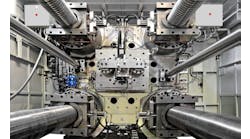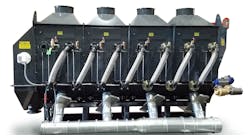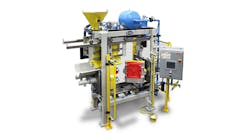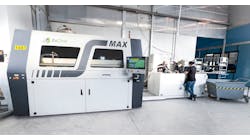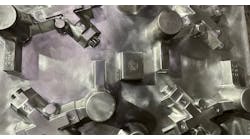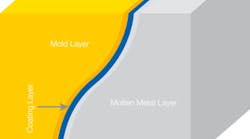ASK Chemicals produces chemicals for all types of applications and uses in metalcasting, including mold coatings for sand and permanent molds. These coatings act as a barrier between the mold material and the liquid metal. One area of continuing process development is the coating process. What is the best way for the coating formulations be applied?
Sometimes coatings are brushed, sprayed, dipped, powder coated, or flooded. Of course, the choice depends on various criteria relating to a particular application method. Despite this, however, the two primary methods for applying coatings to molds and cores are brushing and spraying.
Brushing is particularly useful, and widely used, for coating the dimensions of complex castings, as well as for molds with difficult handling requirements. This is especially true for manufacturers of large-scale castings, although spraying is also very popular in these cases.
Ultimately, a cost-benefit-analysis comes into play when choosing one coating method over another. Based on our most recent findings, the widely popular brushing method may be inferior to spraying.
Simple and popular
The simplicity of “brushing” has made it a popular application method for years. For one thing, it is simple: you need only a brush. No high-tech equipment is required. Understandably, one can assume this method is cheap, and it is, though it is inexpensive for a couple of reasons. For instance, not only is the brush itself low-cost but the application also consumes less coating material. Thus, you will save more coating in the long-run.
Another advantage to brushing is the simple, low-emission cleaning requirements.
Brushing, though, also has disadvantages, two in particular. When using a brush to apply a coating you will undoubtedly experience “brush strokes.” This may not seem to be a problem, but brush strokes create an inconsistent texture layer that may alter the coatings’ effectiveness. Therefore, extra care when brushing is recommended to ensure an adequate coating.
This leads us to another disadvantage of the brush-method: time. Brushing takes a relatively long time to complete, in contrast to spraying. Some cores and molds can be quite large. When using a brush alone to apply a coating it will prolong this stage of the casting process.
Several types of coating sprayers are commercially available now. In our study, though, we chose an air-less sprayer, the Professional Series Airless Sprayer designed by WIWA, an equipment manufacturer based in Germany. (A North American company with a similar line of products for foundries is Armour Spray Systems Inc.)
We discovered that the air-less device was particularly well suited for processing high-viscosity, low-solvent, and solvent-free materials with a high percentage of solids, and was optimally designed for longer material hoses, larger nozzle boreholes, and high spraying pressures.
Furthermore, the device was uniquely designed for applications with coarsely pigmented or abrasive materials with low-to-medium viscosity, such as zinc primer, micaceous iron ore, solvent-based zinc silicate, glass flake, printing inks, flame protection, and other heavily pigmented or fibrous materials.
Further advantages
Additional benefits for the WIWA sprayer include:
- It is suitable for both water-based and alcohol-based coatings
- Multiple nozzle accessories are available to accommodate different spray angles
- It maintains high working pressure
- It minimizes excess spray that causes coating waste and employee health issues
- It is easy to transport.
In the end our tests discovered a mixed solution, literally. When using the airless sprayer coating time was reduced by 40-60% compared to simply brushing. However, some difficulty was found in reaching areas with complex geometries. Thus, brushing was incorporated in these situations.
Finally, when answering the question over which coating application methodology is best, the answer is simply “yes,” in both cases. Spraying will always provide faster results and uniform application, but brushing is necessary too in certain complex situations.
Dr. Reinhard Stötzel and Dipl.-Ing. Ekaterina Potaturina are affiliated with ASK Chemicals L.P.
Dipl.-Ing. Ingo Lappat and Dipl.-Ing. Martin Vorrath are affiliated with Meuselwitz Guss Eisengießerei GmbH, a gray and ductile iron foundry in Meuselwitz, Germany.
